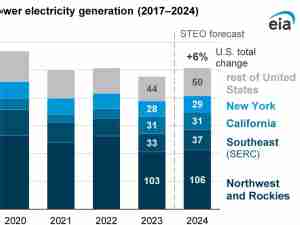Trafigura Sending Shipment of U.S. Oil Through Panama Canal
By: Sheela Tobben and Javier Blas | Mar 29 2016 at 04:57 PM | International Trade
After heading as far as Israel and China, unrestricted U.S. crude oil exports are set for another first since a 40-year ban on overseas sales was lifted three months ago: crossing the Panama Canal.
Trafigura Group Pte., the trading house, is shipping a cargo of West Texas Intermediate oil via the 50-mile (80-kilometer) waterway linking the Atlantic and the Pacific en route to a refinery on Nicaragua’s western coast.
The Panamax vessel DS Promoter is carrying 380,000 barrels of WTI to the 20,000-barrel-a-day Manref refinery on the outskirts of Managua, Trafigura said. Puma Energy International, in which the trading house controls a 49 percent stake, bought the refinery from Exxon Mobil Corp. in a deal announced in 2011.
The canal’s giant locks, which lift vessels 85 feet above sea level to cross the Panama isthmus through the Gatun Lake, can’t accommodate the largest tankers, increasing the cost of shipping crude through the waterway. A so-called Panamax tanker can typically carry 400,000 barrels, about one-fifth the capacity of the largest crude carriers.
Third Cargo
For Trafigura, it’s at least the third cargo of U.S. crude for export this year, according to ship-tracking data compiled by Bloomberg. The company shipped a cargo in February to Europe aboard the ship Sabine and another in March for Israel on the Scarlet Trader.
With American oil stockpiles at unprecedented levels, tankers laden with U.S. crude have docked in, or are heading to, Europe, Israel, China and Panama. Oil traders said other destinations are likely. Yet, U.S. oil exports into the east coast of Canada have declined over the last few months, damping overall export flows.
“Traders are going to want to try to export as much as they can,” especially with so much U.S. crude available, Dominick A. Chirichella, founding partner of the Energy Management Institute in New York, said Thursday in a phone interview. Output in 2015 averaged 9.43 million barrels a day, a 19-year high, according to data from the Energy Information Administration.
Oil Embargo
The U.S. Congress lifted the export ban in December, prompting traders from Vitol Group BV to major energy groups such as Exxon Mobil to ship U.S. crude overseas. The export ban was imposed in the aftermath of a 1973-74 oil embargo by the Arab members of OPEC, the Organization of Petroleum Exporting Countries. The embargo crippled the U.S. economy and highlighted its dependence on imports.
U.S. export volumes will be limited since the price spread between WTI and Brent, the global oil benchmark, is not that wide, Chirichella said. WTI for May delivery settled at an 86-cent discount to Brent Tuesday on the New York Mercantile Exchange, down from $2.26 on Feb. 24. The EIA forecast the spread will stay near zero in its Short-Term Energy Outlook March 8.
“Don’t expect to see a huge volume of exports unless you see a major change in the WTI-Brent spread,” Chirichella said.










